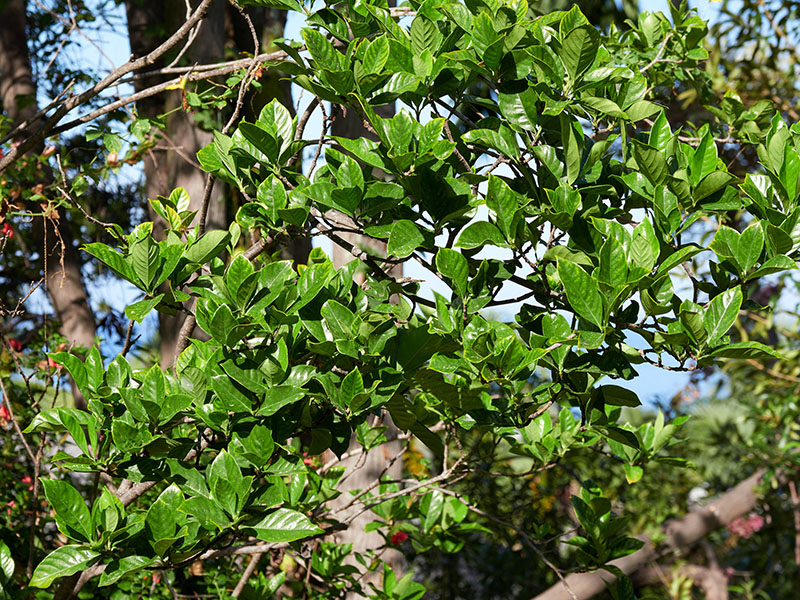Invasive tree brought to Hawai’i to stabilize the soil. The Sugar Planters Assoc and Board of Agriculture planted 300,000 trees, which became widely naturalized in dry areas. The DLNR has designated this as one of “Hawaii’s most invasive horticultural plants.” Plant Pono lists this with a score of 10 for high risk. DO NOT PLANT.
F 08 GOLDEN DEWDROP (Duranta Erecta) Verbenaceae family
A species of flowering shrub native from Mexico to South America and the Caribbean. It is widely cultivated as an ornamental plant in tropical and subtropical gardens throughout the world, and has become naturalized in many places. It is considered invasive on some tropical islands. In its native environment, it is found in rocky or sandy coastal areas with full …
F 06 MOCK ORANGE (Philadelphus spp) Hydrangeaceae family
This genus has about 60 species native to North America, Central America and Asia. Called “mock” due to their flowers, which, in the native species, resemble citrus flowers and smell of orange and jasmine flowers. Some varieties are evergreen, but most are deciduous. Full sun Large shrub needs space Moist, well-drained soil
F 05 WALKING IRIS (Neomerica spp) Iridaceae family
These are clumping herbaceous perennials, with flowers resembling a cross between an orchid and an iris. Full or partial shade Moist soil Plant in clusters
F 03 GREEN STRIPE BAMBOO (Pleioblastus viridistriatus) Poaceae family
Known for its yellow canes with green stripes, this member of the grass family is native to China and Japan. Fast growing, it can mature to 45 feet. Bamboo can rapidly spread by vigorous underground rhizomes, though this bamboo can be contained through root trimming. Some bamboo varieties were used by Hawaiians for fishing poles. Partial sun Rapidly spreads Salt …
F 02 JAPANESE PODOCARPUS (Podocarpus nagi) Podocarpaceae family
Tall conifer to 90 feet tall; elegant spreading branches; slender, leathery pendant green leaves Species threatened by habitat loss Full sun to deep shade Well-drained soil Screen or hedge plant Slow growth rate
F 01 FISHTAIL PALM (Caryotmitis) Arecaceae Family
A clustering species of palm, up to 33 feet. Each leaf is made of pairs of leaflets shaped like fish tails, giving it its name. Purple to red fruits, harmful to humans (oxalates) Grows 1-2 feet per year High moisture requirement







